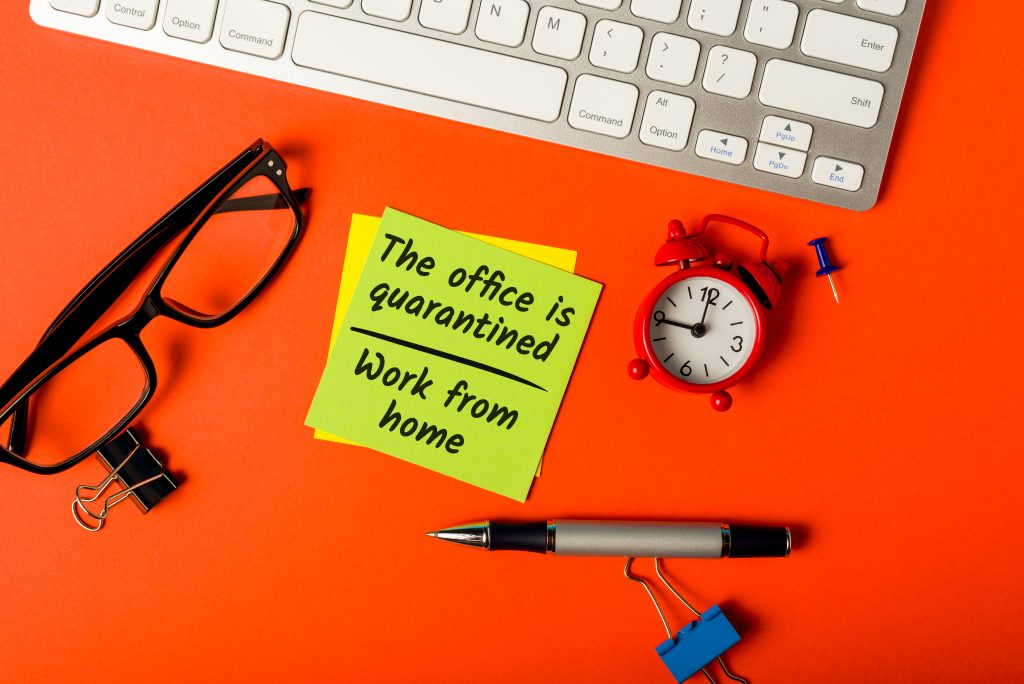As the world continues to deal with the COVID-19 pandemic, corporations across the globe have frantically developed contingency plans to help ensure the safety of their employees whilst trying to continue to function during these worrying times. This unprecedented situation is like none we have ever faced in our lifetime and we, like many business owners, face an uncertain few months as the crisis unfolds and we begin to understand the true consequences for us and our team. During this period it is difficult to look beyond the next week, let alone months and years ahead, yet it feels to me as though this enforced change to our daily lives may actually provide us with a unique opportunity that could be to the benefit of employees and businesses in the future.
For many years now, organisations have grappled with the idea of remote working and allowing their employees the flexibility to work from a variety of locations including their own home. With technology developing at a rapid pace, providing employees with everything they need to work comfortably and still deliver true value, the benefits to home working seem obvious; no wasted hours commuting to the office, happier employees who can fit their work around family needs, the opportunity to reduce an organisations real estate portfolio and smaller budgets required for property management services. However, these benefits are often overlooked and instead many companies revert to type; questioning productivity when employees are out of sight, determined to drive asset utilisation across their real estate to show value for money against long-term leases, convinced that their teams can only be successful if they meet/collaborate/work face to face and so on.
In addition, despite a growing body of research suggesting corporate burnout is getting out of control, stress levels are continuing to rise and the population as a whole is becoming more unfit and less active, organisations have been slow to truly embrace a long-term strategy that tackles the physical and mental wellbeing of their employees. Whilst many spend large sums on wellbeing programmes, on-site gyms, healthier office food options etc. (all of which can be very beneficial if delivered in the right way), it still feels that few organisations have a joined up approach which considers how the workplace environment and ways of working can be used as effective tools to support an employee’s health & wellbeing as well as their ability to perform at their best.
What if the next few weeks or months of home working provide evidence that employees are as (or even more) productive, but are also happier, less stressed, get better sleep, are able to be as active (even allowing for the current situation) and have all the tools they need to collaborate with their team so as not to feel isolated? These sort of findings could lead to a dramatic shift in pre-conceived ideas around where employees should be located, what a real estate portfolio needs to look like to support this and how to best enhance the health & wellbeing of staff in a long-term and sustainable manner. Even if the results are not as positive as the scenario painted above, any findings that can be derived from this period can act as a baseline against which more informed decisions can be made, helping to ensure future strategies are based on data driven insights rather than outdated opinions or a lack of desire to embrace change in relation to home-based working.
We (ART Health Solutions) are in the fortunate position of being able to measure employees from multiple organisations, including our own, whilst they undertake this period of home working. We’ll be tracking their wellbeing, both physical and mental, their cognitive performance and their subjective responses to their home working environment so we can compare these findings to working in their regular workplace. This will allow us to better understand the impact this remote working period has on employee wellbeing and performance.
Over the coming weeks, I will share some of the findings from our own team’s period of home working so organisations can start to gain a better understanding of the impact this unique situation is having on employees. We would also welcome the opportunity to collect data from a larger pool of employees during this period. Given our capabilities to remotely monitor employees, we are offering our unique services FOR FREE for up to 8 weeks during this period of home working. If you would be interested in measuring the wellbeing & performance of a group of your own employees, or being measured yourself, please get in touch with me via my email below or LinkedIn. The data collected will allow us to share useful findings regarding how employee’s health & wellbeing is being affected by consistent home-working and will help organisations to better support their teams during this difficult period. Please contact me at paul@arthealthsolutions.com if you would like to discuss getting involved.

